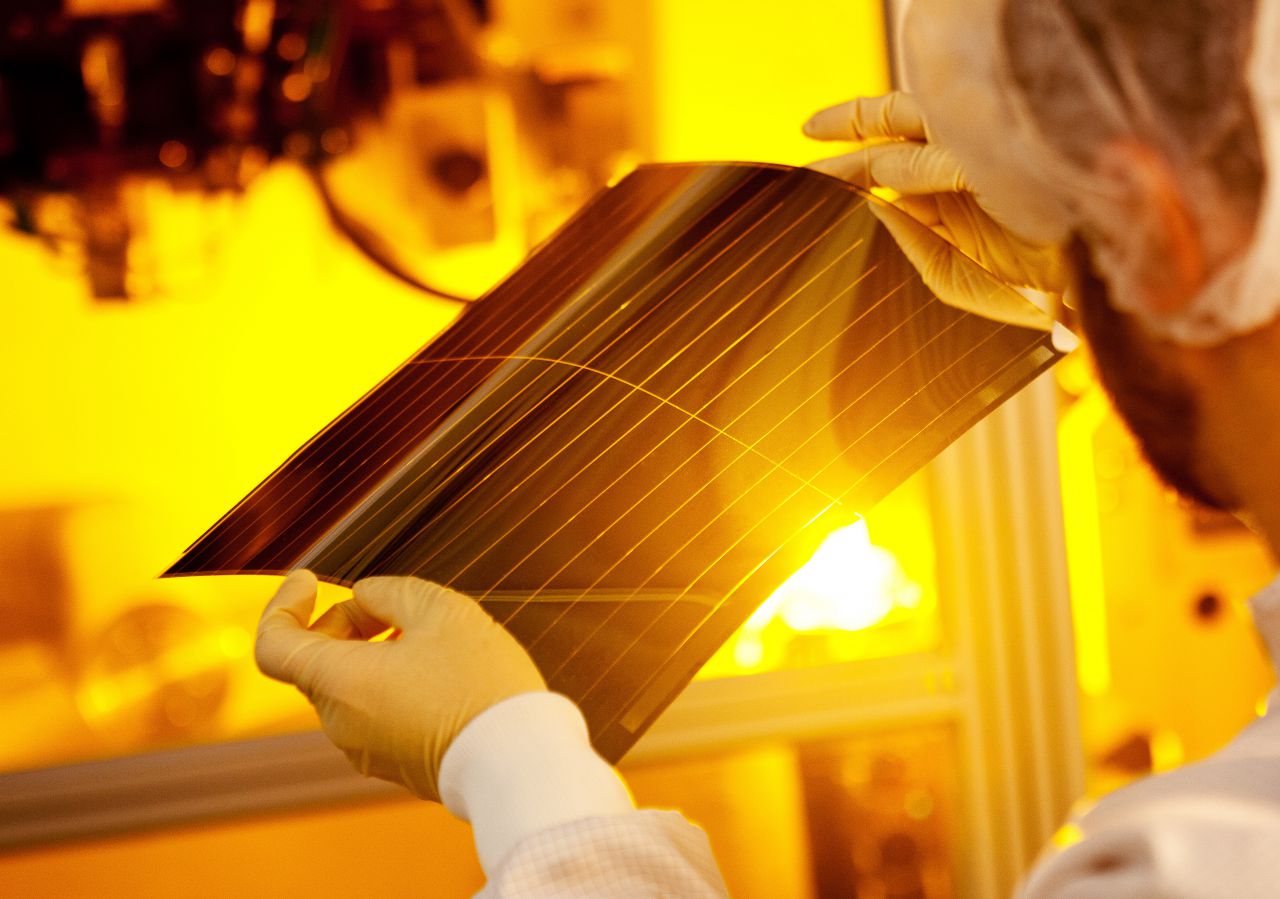- Heliatek announces new world record efficiency of 13.2% at lab scale, while the OPV developer also progressing on commercial front
- The record cell is based on a multi-junction configuration combining three different absorbers to absorb the maximum part of the solar spectrum
- Production efficiency currently is at 7 to 8%
- HeliaFilm, the solar product of the company, is being offered in customer tailored configuration, especially in different sizes and colors
Raising the absolute efficiency by 10 percentage points in 10 years of time is simply not easy, even if the starting point was quite low. Heliatek GmbH has achieved such progress for its Organic PV (OPV) technology. On Feb. 8, the German-based company has announced that its R&D team attained a record conversion efficiency of 13.2%, consistently improving over the last 10 years from about 3%. The current record cell is an OPV multi-junction lab-size cell of 1.37 cm2 fabricated with vacuum deposition of small molecules on plastic films and the results are certified by Fraunhofer Center for Silizium-Photovoltaik (CSP). The achievement is also inline with the company’s internal roadmap towards 15% efficient organic solar cells and surpassed its 2013’s lab level record of 12% on 1.1 cm2 cell area.
In 2006, Heliatek was spun off from the Technical University of Dresden and the University of Ulm to commercialize large area OPV solar films. Its core technology lies in vacuum assisted roll-roll deposition of organic absorbers on flexible PET films in an inert atmosphere. The company also develops its own organic absorber material.
Unlike other OPV technologies employing larger polymer molecules, which require complex solvent and printing processes, Heliatek says it follows a simple approach of thermal evaporation of small organic absorber molecules, which accomplishes the process at low temperatures. The films are not exposed to temperatures exceeding 120 oC throughout the entire process. Then, laser patterning enables optimal use of surface area. The final product is a flexible OPV substrate called HeliaFilm, which is based on patented multilayer stack architecture consisting of organic molecules-based solar cells with doped transport layers. The multi-layer configuration enables to widen the absorption band of the PV device to closely match the solar spectrum.
The world-record cell is a multi-junction cell combining three different absorbers. Each absorber is designed to absorb a particular portion of the solar spectrum, namely; green-, red- or near-infrared light of the wavelength range between 450 and 950 nm. Heliatek CEO Thibaud Le Séguillon attributes the record level performance to newly developed absorber molecules and optimized device architecture. The latter most likely refers to using three absorber layer instead of two, which were used for the previous record cell. These absorber molecules have been developed and are patented by Heliatek.
While the above efficiency refers to standard test conditions, Heliatek says it’s PV films are superior in real time working conditions, especially in low light and higher operating temperatures. Factoring in these two advantages, Heliatek claims its 13.2% efficient device is comparable to 16% to 17% of conventional solar cells when operated in real world conditions. However, in commercial production, HeliaFilm currently reach efficiencies ranging from 7% to 8%. The specially designed roll-to-roll process allows for high material utilization rates – 1 m2 of active film area requires just 1 g of organic precursor. The entire process has a very short energy payback period of less than 3 months.
Commercial product available
The commercially supplied HeliaFilm is is available in lengths starting from 0.3 to 2 m, and the company would also honor special requests for more than 2 m length. Another important feature of Heliatek’s product is a wide color choice. By modifying the absorber molecules and changing the thickness of the various active and conductive layers, the company says, it can configure the color and transparency of its PV film. The HeliaFilm is offered in different shades of grey, blue and green. As for transparency, the company attained a laboratory efficiency of 6% for films with 50% transparency.
The HeliaFilm is less than 1 mm in thickness and weighs about 1 kg per m2. The biggest concern about OPV technology is its long term reliability. Heliatek says that the intrinsic lifespan of its small molecules is greater than 25 years and its proprietary technology has been inspired from established OLED manufacturing, especially used in displays. It also says its OPV films have passed through severe degradation tests – the films showed less than 10% degradation after 3,000 hours at 85°C / 85% relative humidity, which is 3 times higher than the industry norm of 1,000 hours. Heliatek aims to supply custom-designed HeliaFilm to construction companies, automobile industries and builders of light architecture structures. That means, Heliatek is not only progressing at improving lab level performance – raising absolute efficiency by 10% in 10 years – the company is also moving ahead in commercial space.












